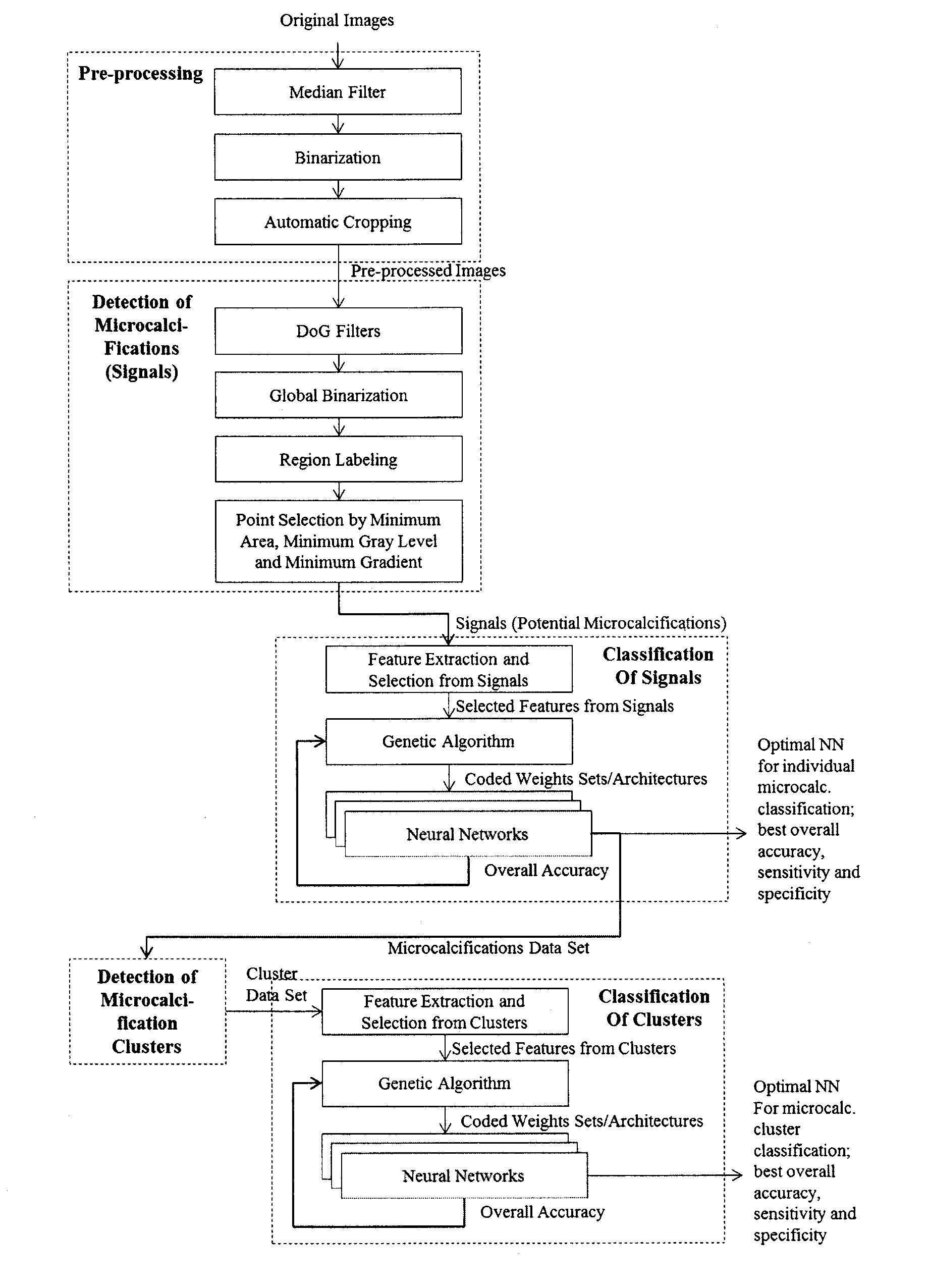Method for the detection and classification of microcalcification clusters in digital mammograms
a microcalcification and clustering technology, applied in the field of breast cancer screening mammography, can solve the problems of low sensitivity (correct diagnosis of positive cases), low predictive value of mammograms, and inefficient process from a practical viewpoin
- Summary
- Abstract
- Description
- Claims
- Application Information
AI Technical Summary
Benefits of technology
Problems solved by technology
Method used
Image
Examples
Embodiment Construction
[0018]The method for the detection and classification of microcalcification clusters in digital mammograms of the present invention will be described in accordance with a preferred embodiment thereof and making reference to the accompanying drawings.
[0019]The method for the detection and classification of microcalcification clusters in digital mammograms of the present invention is processed entirely on a data processing system that receives a digital mammogram as an input, and processes the following five steps that comprises the method of the present invention: pre-processing, detection of potential microcalcifications (signals), classification of signals into real microcalcifications, and detection of microcalcification clusters and classification of microcalcification clusters into benign and malignant. The diagram of the method of the present invention is shown in FIG. 1. As end-products of the method, there are obtained two artificial neural networks for classifying microcalci...
PUM
 Login to View More
Login to View More Abstract
Description
Claims
Application Information
 Login to View More
Login to View More - R&D
- Intellectual Property
- Life Sciences
- Materials
- Tech Scout
- Unparalleled Data Quality
- Higher Quality Content
- 60% Fewer Hallucinations
Browse by: Latest US Patents, China's latest patents, Technical Efficacy Thesaurus, Application Domain, Technology Topic, Popular Technical Reports.
© 2025 PatSnap. All rights reserved.Legal|Privacy policy|Modern Slavery Act Transparency Statement|Sitemap|About US| Contact US: help@patsnap.com


